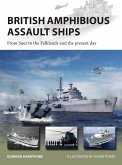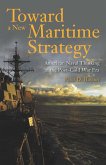The U.S. Department of Defense defines a fleet in being as "a fleet or force that avoids decisive action, but because of its strength and location, causes or necessitates counter-concentrations and so reduces the number of opposing units available for operations elsewhere." This illuminating work makes clear that fleet-in-being strategies have been highly consequential throughout history. Given the correct geography and platforms, both large and small navies have employed fleet-in-being strategies to great operational and strategic advantage. The case studies in this book will show how, when, and why.
Naval analysts generally emphasize offensive naval missions: blockades, raids, expeditionary warfare, and fleet-on-fleet engagements. Most of these actions concern positive operational objectives: shutting down traffic, cutting trade, launching an invasion, or sinking an enemy fleet. Deterrence and Denial brings together leading experts to examine an essential yet often overlooked element of naval strategy: the deterrent impacts of a fleet even when not conducting aggressive operations-a fleet in being.
This collection presents eighteen case studies, ranging from the late seventeenth century to the present, of the operational and strategic effectiveness of a fleet in being. Highlighted is the deterrent value of navies-what a fleet in being prevents from occurring in peacetime-as well as what it denies enemies in wartime. These negative operational and strategic objectives are difficult to study and often neglected, but they are no less important: preventing an attack on the homeland or stifling an enemy's preferred strategy can be as crucial to success as any positive objective. Each chapter is written by a prominent historian who explores the concept of fleet in being in historical and geographic contexts to demonstrate what the strategy has accomplished in both peacetime and wartime.
The first four-chapter section covers the Age of Sail, including Napoleon's naval strategy; the second section, the period immediately prior to the world wars. The third section focuses on the world wars and the different geographic constraints placed on fleets in being. The final three chapters examine the cold wars of the twentieth and twenty-first centuries, including China's current offensive version of fleet-in-being strategy and Russia's naval strategy under Vladimir Putin. This collection is a major contribution to any understanding of the deterrence and denial capabilities of navies in the modern world.
Naval analysts generally emphasize offensive naval missions: blockades, raids, expeditionary warfare, and fleet-on-fleet engagements. Most of these actions concern positive operational objectives: shutting down traffic, cutting trade, launching an invasion, or sinking an enemy fleet. Deterrence and Denial brings together leading experts to examine an essential yet often overlooked element of naval strategy: the deterrent impacts of a fleet even when not conducting aggressive operations-a fleet in being.
This collection presents eighteen case studies, ranging from the late seventeenth century to the present, of the operational and strategic effectiveness of a fleet in being. Highlighted is the deterrent value of navies-what a fleet in being prevents from occurring in peacetime-as well as what it denies enemies in wartime. These negative operational and strategic objectives are difficult to study and often neglected, but they are no less important: preventing an attack on the homeland or stifling an enemy's preferred strategy can be as crucial to success as any positive objective. Each chapter is written by a prominent historian who explores the concept of fleet in being in historical and geographic contexts to demonstrate what the strategy has accomplished in both peacetime and wartime.
The first four-chapter section covers the Age of Sail, including Napoleon's naval strategy; the second section, the period immediately prior to the world wars. The third section focuses on the world wars and the different geographic constraints placed on fleets in being. The final three chapters examine the cold wars of the twentieth and twenty-first centuries, including China's current offensive version of fleet-in-being strategy and Russia's naval strategy under Vladimir Putin. This collection is a major contribution to any understanding of the deterrence and denial capabilities of navies in the modern world.
Dieser Download kann aus rechtlichen Gründen nur mit Rechnungsadresse in A, D ausgeliefert werden.









